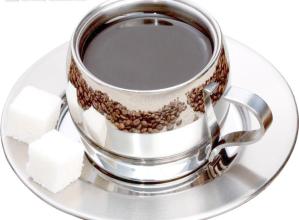Story characteristics of four major coffee producing areas in the world Coffee beans from North America, Africa, Asia, Central and South America
Beans taste different according to the region where they grow. The factors that affect the taste are the variety of coffee trees, the soil properties of growth, the climate and altitude of the cultivation garden, the care of picking results, and the process of bean treatment, etc. These elements vary from region to region, while bakers and integrated manufacturers look for the characteristics of each region, so that the comprehensive products have their own unique typical flavor. You can try to pursue the coffee of your dreams.
North America
Cuba
Cuban Crystal Mountain Coffee-Cubita
Cubita Coffee
Cubita Coffee
In Cuba, the cultivation of coffee is regulated by the state. The best coffee growing area in Cuba is located in the Central Mountains. Because this area not only grows coffee, but also produces quartz, crystal and other precious minerals, it is also known as Crystal Mountain. Crystal Mountain is adjacent to the Blue Mountains of Jamaica, with similar climatic conditions and taste similar to Blue Mountain Coffee, comparable to the Blue Mountains of Jamaica. Therefore, the Cuban Crystal Mountain has become the object of comparison with the Jamaican Blue Mountains, which is also known as the "Blue Mountains of Cuba".
Cuba Crystal Mountain represents coffee is Cubita, the Chinese name: Amber Coffee. Cubirta is like an elegant princess. Crystal Mountain Cubita Coffee is synonymous with top Cuban coffee.
Cubita has become the designated coffee of the Cuban embassy, known as "unique Caribbean flavor coffee" and "special coffee beans among island coffee beans".
Coffee producing areas of Central and South America
Coffee producing areas of Central and South America
Coffee producing areas of Central and South America
Coffee producing areas of Central and South America
Africa
1. C ô te d'Ivoire
Some people say it is the third largest coffee producer in the world after Brazil and Colombia, but others say it is Indonesia. But what is certain is that its original Robusta production is the first in the world.
The main producing area is in the south, producing Robusta original medium-sized coffee beans.
two。 Ethiopia
Ethiopia is an agricultural country with a history and tradition of coffee origin. The place where the name "coffee" comes from is Kafa in the southwest, while the Hitamo place in the south is the main producing area. Eastern Highland Hara is as famous as the coffee name "Hara".
Asia
1. India
The southwestern state of Karnataka is the main producing area, and coffee beans are in the shape of large grains. The coffee beans from the southeastern state of Tamil Nadu, though small, are high-end products of India.
two。 Indonesia
The coffee producing area in Indonesia is mainly limited to Java, Sumatra and Sulawesi. The original species of Robusta accounts for 90% of its coffee production.
A small amount of Arabica native coffee beans produced on the island of Java are sour coffee beans with small particles. The original species of Arabicam on this island was once a world-class product, but in 1920, due to large-scale diseases and insect pests, it was changed to the original species of Robusta. Up to now, its original Robusta coffee beans are second to none in the world, with personalized bitterness, "Java", which is widely used for mixed use.
Mantenin, produced in Sumatra, is one of the few Arabica species with large particles, but poor production management and baking are immediately reflected in the coffee beans, so they will be criticized, but the rich and mellow taste from Toyo, such as syrup-like taste, made it considered the best before the Blue Mountains appeared, and many people still love it and can't put it down. Ankara is a kind of coffee beans with small grains and a little round, which represents the coffee of Indonesia.
Manning, Indonesia is a big coffee producer. Coffee is mainly produced in Java, Sumatra and Sulawi, with ROBUSTA species accounting for 90% of the total production. Manning is one of the few Arbica species. The granule of Mantenin is large, the bean quality is very hard, and the rate of defects in the planting process is on the high side, which is usually selected manually after harvest. If the control process is not strict enough, it is easy to cause a mixture of good and bad quality, and different baking degrees also directly affect the taste. Therefore, it has become a more controversial single product. Before Blue Mountain was discovered, Manning was regarded as the best coffee because of its rich and mellow taste, not astringent but not sour, mellow and bitter; moderate roasting will leave a moderate sour taste and unique flavor; if the roasting is too shallow, it will be powdery and astringent.
3. Yemen
There is a saying that coffee was brought to Yemen from Ethiopia before it was used as a stronghold to spread around the world. Because it is the birthplace of the original name of Arabica, it was once famous for its mocha coffee, but now it is no longer as grand as it was then.
Central and South America
1. Mexico
Coffee production is concentrated in the south near Guatemala, with mountains running through the east and west, making its mountains tilted, making it an ideal terrain for coffee cultivation. Coffee cultivation is still common.
According to the order, the highland is classified into three kinds of high-yield coffee: Arudora, Prima, Rabad and Barnabad. Coffee beans range in size from medium to large, with a good appearance and aroma.
two。 Jamaica
The island of Jamaica, famous for its coffee, is a small republic in the Caribbean. The slopes of the mountains that run through the island are the main producers of Jamaican coffee. The most famous is Blue Mountain Blue Mountain, located in the northeast of the capital Kingston. The beautiful Blue Mountain Lianfeng is an excellent place for coffee cultivation. It is named after the highest peak of 2256 meters Blue Mountain system, which is known as the best coffee "Blue Mountain Coffee". The granules are of good quality and harmonious taste, with appropriate acidity, bitterness, aroma, mellow and sweetness. They are recognized as the best all over the world. They are usually accompanied by exquisite factory logos and warranties, and then put into large barrels similar to large beer barrels for export. There are NO.1, NO.2, NO.3, beans and other grades.
Blue Mountain Coffee is produced in the Blue Mountains of western Jamaica, hence its name. Blue Mountain is a mountain range with an elevation of 2256 meters. Coffee trees are planted on a steep hillside about 1000 meters above sea level. The annual output of Blue Mountain Coffee is only about 700 tons. Blue Mountain coffee beans are full in shape and slightly bigger than ordinary beans. Sour, fragrant, mellow, sweet taste is uniform and strong, slightly bitter taste, harmonious taste, excellent flavor, suitable for individual coffee. Due to the low output, most of the products sold on the market are "special blue mountains", that is, mixed coffee with other coffee beans at the bottom of the blue mountains.
3. Brazil
It can be called the "coffee continent" of the world's largest coffee producer and exporter. As about ten states in the vast territory adopt mass production, in order to make up for the regional gap and quality gap, Brazil sets its own grading benchmark in order to stabilize the quality.
The quality of the production is very good, since ancient times as an indispensable blend of coffee beans, processing is also easier to carry out, widely accepted by the world. In particular, coffee beans that meet the four conditions of Brazil, Santos, quality similar to NO.2, Screen18, Screen19, soft taste and these four conditions are the most well received and most widely used. Brazil is the most important coffee producing area in the world, accounting for 1x3 of the total output in the world. Brazil has 10 states producing coffee beans. Due to differences in region and climate, the quality of Brazilian coffee beans is inevitably intermingled. Therefore, Brazilian coffee beans are divided into No.1-No.3,Screen 18 and screen 19 according to the grade, so that the quality is neat and stable, and the processing and roasting can also have a better effect. Brazilian coffee is medium-fragrant, sour and mellow, has a mild bitter taste and is famous for its smooth taste. Among all kinds of Brazilian coffee varieties, Santos Coffee is more famous. Santos Coffee can also be called Bourbon Santos. Bourbon Santos is of good quality and has a round taste with moderate acidity and strong sweetness. Bourbon Santos is considered to be an indispensable ingredient for mixed coffee.
4. Colombia
The world's second largest coffee producer after Brazil. Is the leader in the country that produces "Columbia mild". The name of origin has become a well-known name for coffee, such as Medning, Manizarez, Bogota, Almenia and so on. Coffee beans are light green and large-grained, and according to their unique thick flavor, they are very suitable for both pure coffee and mixing.
Colombia is the second largest coffee producer in the world, accounting for 12% of the world's total output, second only to Brazil and the largest producer of Colombian Mild. Colombian coffee trees are planted in the highlands and have a small cultivated area in order to take care of harvesting. The harvested coffee beans are refined with water washing (wet method). Colombian coffee beans are of neat quality and can be called the standard beans among coffee beans. Colombian coffee beans are large in shape, light green, with a special thick flavor, and are widely favored for their rich and unique aroma. The taste is sweet in the acid and low in bitterness, which can lead to multi-level flavor with the different degree of baking. Medium baking gives full play to the sweetness of beans, with mellow acidity and bitterness; deep baking increases bitterness, but the sweetness still doesn't disappear much. Generally speaking, medium-deep roasting will make the taste more personalized, not only as a single drink, but also suitable for mixed coffee.
5. Hawaii
Kona Coffee
Produced from
Coffee beans
Coffee beans
The coffee beans used in Kona Coffee in Hawaii are grown on volcanic terrain. At the same time, there is a high density of artificial farming, so each bean can be said to be spoiled, the price is naturally expensive, second only to the Blue Mountains. Hawaiian Kona beans are evenly shaped and have a strong sour and sweet taste. The palate is moist and smooth. Moderate baking makes beans sour, while deep baking aggravates both bitterness and mellow taste. This coffee bean grows from sea level to 6000 feet. Gourmet coffee generally grows only in mountain areas, growing at a height of about 4000 to 6000 feet requires annual rainfall of about 80 feet and is obvious in dry and wet seasons. The soil for growing gourmet coffee beans should be very fertile and usually have volcanic rock, and light cloudy or cloudy weather is also necessary in the growing environment of high-quality coffee beans. The daytime temperature needs 15-20 ℃. This climate results in a longer growth process, unique growth and climatic environment, resulting in a stronger coffee flavor.

Important Notice :
前街咖啡 FrontStreet Coffee has moved to new addredd:
FrontStreet Coffee Address: 315,Donghua East Road,GuangZhou
Tel:020 38364473
- Prev

The Origin of Espresso Coffee extraction method Italian Coffee Italian mixed beans
Espresso requires a deeper baking degree that is different from other extraction methods. Baking can be divided into light baking, medium baking and deep baking. In addition to this simple classification, there is a more complex classification of SCAA baking, including shallow baking, medium baking, deep baking and re-baking. The extraction methods that emphasize the flavor of origin, such as hand-brewed coffee, are usually used.
- Next

What is the change in flavor after blending?
Highlighting the good flavors and hiding the bad can also be the purpose of blending. Want a more balanced cup of coffee, want a strong cup of acidity, great body and plum fruit aroma, and great fat? That must be a shortcut, for business operations in terms of such a high cost of single difficult to find. A good name will add a lot of points to the mix, so it is easier to create selling points such as:
Related
- Does Rose Summer choose Blue, Green or Red? Detailed explanation of Rose Summer Coffee plots and Classification in Panamanian Jade Manor
- What is the difference between the origin, producing area, processing plant, cooperative and manor of coffee beans?
- How fine does the espresso powder fit? how to grind the espresso?
- Sca coffee roasting degree color card coffee roasting degree 8 roasting color values what do you mean?
- The practice of lattes: how to make lattes at home
- Introduction to Indonesian Fine Coffee beans-- Java Coffee producing area of Indonesian Arabica Coffee
- How much will the flavor of light and medium roasted rose summer be expressed? What baking level is rose summer suitable for?
- Introduction to the characteristics of washing, sun-drying or wet-planing coffee commonly used in Mantenin, Indonesia
- Price characteristics of Arabica Coffee Bean Starbucks introduction to Manning Coffee Bean Taste producing area Variety Manor
- What is the authentic Yega flavor? What are the flavor characteristics of the really excellent Yejasuffi coffee beans?

